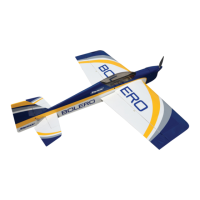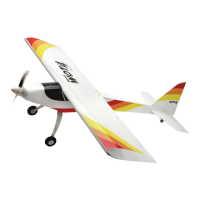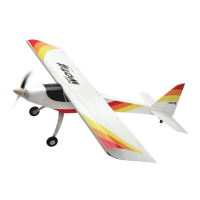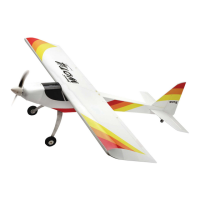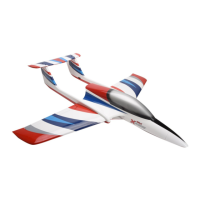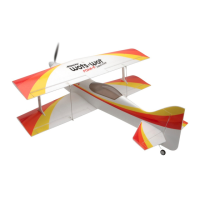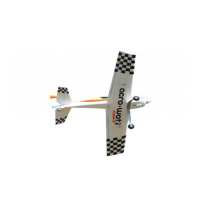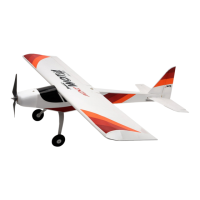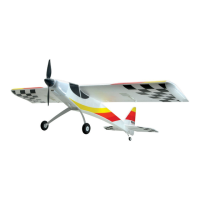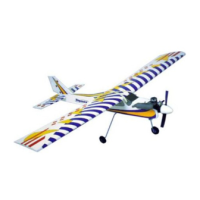Do you have a question about the Ripmax mini Bossanova and is the answer not in the manual?
Install eight hinges mid-way into the wing's trailing edge using thin cyano glue.
Slide ailerons into position, ensuring a gap-free line and full movement.
Fit aileron servos into apertures, connecting leads through the wing.
Glue control horns to the reinforced section at the rear of aileron servo cutouts.
Connect control rods from servos to control horns using nylon keepers.
Mark and position tailplane ensuring it is square to the fuselage.
Mark tailplane entry points and cut covering for glue bonding.
Insert elevator hinges into pre-cut slots and secure with cyano glue.
Fit elevator joiner and glue tailplane in position with epoxy.
Fit elevators onto the joiner, ensuring hinges are in slots.
Flex elevators to ensure free movement through their entire range.
Install rudder hinges into the rudder and secure with cyano glue.
Screw tailwheel assembly to fuselage rear and fit rudder to wire.
Slide rudder into position on tailwheel wire, ensuring free movement.
Attach motor to mount and mount to front bulkhead with screws.
Screw motor into position, noting offset for right thrust.
Fit propeller adaptor and spinner rings, thread motor wires through.
Mount propeller, then cowl with self-tapping screws, ensuring even gap.
Glue spinner nosecone onto rings, ensuring it is square and fits propeller.
Slide undercarriage into fuselage slot and secure with screws and nuts.
Trim covering for fairing access, seal edges and mark fairing position.
Glue wing fairing in position using tape while epoxy cures.
Mount rudder and elevator servos in fuselage, with outputs forward.
Connect pushrods from servos to control horns using keepers.
Mount receiver and ESC, connect aerial, and secure.
Position battery, check balance, and fit canopy.
Recommended initial control throws for elevator, rudder, and ailerons.
Essential checks for transmitter, battery, screws, controls, and aerial.
Set Center of Gravity to 85mm from wing leading edge for stable flight.
| Motor | Brushless Outrunner |
|---|---|
| Channels | 4 |
| Type | RC Airplane |
| Control | Radio Control |
| Servos | 2 micro servos |
